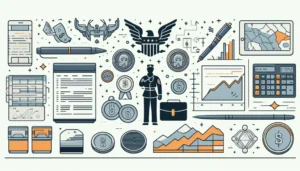Minimalism is not for everyone–but most of us can benefit from the lightness that comes with decluttering. Simplifying allows us to see our spending patterns more clearly, and make our daily routines seamless.
Oddly though, most of our physical baggage is weighed down by emotional baggage. Many of us hold onto things we don’t actually want or need because we feel obligated to keep it or tell ourselves it will serve a purpose–someday. Practicing minimalism, even in small ways can help you examine your attachment to stuff and where your money is flowing.
Unpack Your Attachment
Marie Kondo’s best-selling book, The Life-Changing Magic of Tidying Up is popular for a reason. Her book, seemingly, gave so many of us the permission and tools to let go of what was no longer serving us. For many, deep decluttering was long overdue and even therapeutic. While I highly recommend you give her book a look, one fast and powerful takeaway from her method of tidying is that everything in your life should serve a purpose and that purpose is joy.
Purpose, in this sense, is aligned with most discussions on minimalism, but with one catch–“purpose” is not just limited to usefulness. For Kondo, an item’s purpose does not boil down to whether or not you can “use” it, but rather–“does it bring me joy?”
Even if you could use a pair of jeans or a food processor, do you enjoy having it? No? It should go. It’s a simple metric but very powerful. She recommends that as you start to purge your things, even if you feel something could be useful, you ask yourself, “Does it spark joy?” If you were given a gift you never put to use, and it doesn’t bring you joy; she recommends a change in perspective and that you see that the gift served its purpose–to be given. And then pass it along.
If you sunk some cash into clothes you never wore, or exercise equipment you never utilized–she uses this “joy metric,” to determine what stays or goes. Nobody likes to waste money, but she argues that keeping things that don’t make you happy wastes your life. If anything in your home brings up feelings of regret, longing, detachment, or frustration, but not joy–it can be released, even if it would technically be “useful.” If you don’t love it right now, regardless of its past history, let it go.
Make It A Challenge
Purging and downsizing towards minimalism looks different to everyone. Some of us really struggle with the task of going through every nook and cranny in our homes to determine what stays and what goes. A few fun tricks to start making minimalism a process in your life is to try the “30 Days Challenge”. On day one, donate or trash one thing, on day two, do the same for two items, then three, then four. By 30 days, you should have built a muscle of getting rid of things and it does get easier over time with each day!
Additionally, minimalists have recommended doing the “reverse clothes hanger” trick to deal with clothes. Flip your hangers around, and as you use each item, you put the hanger back on the rack normally. After 30 days, you should see what’s used and what’s simply hanging around. The same trick works with a box–if you’re having trouble and are unsure about an item, put it in a box and out of sight for 30 days, if you don’t miss it–let it go.
Stemming The Tide of New Items
After going through a 30-day decluttering challenge or clearing out your closets, the idea of getting anything else to deal with might feel overwhelming. Good! At this point, it’s a good idea to get in the habit of unsubscribing to all marketing emails, tossing catalogs before you browse them, and enlisting the support of family and friends to avoid regaining clutter.
This holiday season, I am holding a strict “no stuff” policy. I am only giving edibles and experiences, and ask for the same if a gift is really needed at all. Giving food can be highly personal, like baking your Grandma’s famous banana bread in lieu of a gift, but it can also include other consumables like alcohol, spices or cooking oils, soaps, and candles.
The idea behind giving a gift that gets used up is that you can express your gratitude and show affection in the form of a gift, but it won’t contribute to clutter. I would though, check with your recipient first to ensure they actually use candles or hand soaps, otherwise, it won’t get used and enjoyed, which defeats the purpose.
Related: Freedom Is Not Found At The Store: A Shopping Ban Experiment
Experiences make great gifts to receive and share. Chipping in for a cooking class or paying a portion of someone’s upcoming trip (like offering a cash gift to cover a meal) is meaningful but clutter free! Gift cards might seem like an easy solution but, unless requested, usually become house clutter. So be very specific and intentional if you use these or receive these!
It takes time to become minimalist, but it doesn’t have to be a zero-sum game–everyone can benefit from a little less stuff and more margin in their lives!
Related Articles



